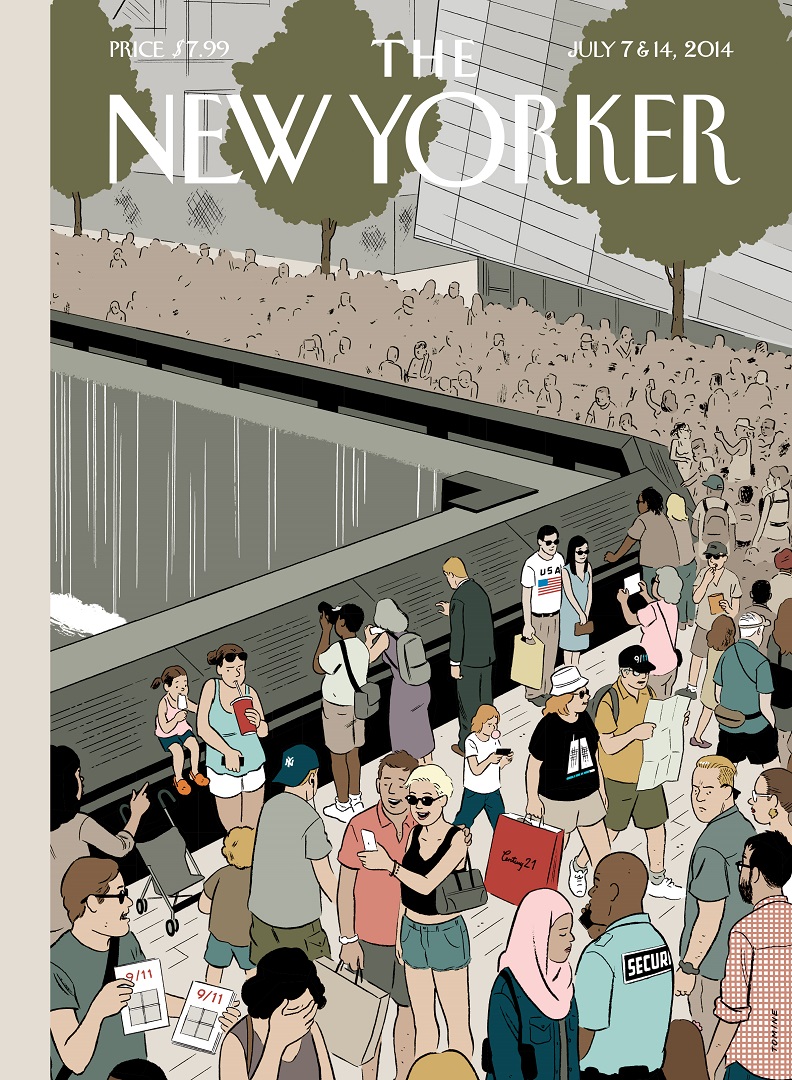Make a donation to the museum
Architecture of Remembrance
Architecture of Remembrance
- Grades 9 to 12
- Lesson Duration: One class period
- Theme: Memorializing 9/11
Essential Question: Can a memorial to a tragic event serve as both a public space and a place of remembrance?
Learning Goals
Students will be introduced to the design of the 9/11 Memorial.
Students will explore the range of reactions and behaviors on the 9/11 Memorial plaza.
Students will consider the dual function of the 9/11 Memorial to serve as both a public space and a place of remembrance.
Vocabulary
The National September 11 Memorial: The Memorial is a tribute of remembrance and honor to the 2,977 people killed in the terror attacks of September 11, 2001 at the World Trade Center site, near Shanksville, Pennsylvania, and at the Pentagon, as well as the six people killed in the World Trade Center bombing on February 26, 1993.
World Trade Center site: Before 9/11, the Twin Towers were the centerpieces of the 16-acre World Trade Center complex. At 110 stories each, the North and South Towers provided nearly 10 million square feet of office space for about 35,000 people and 430 companies. The two towers were surrounded by five other buildings that comprised the WTC complex. The new WTC is a mixed-used environment composed of five office towers and the eight-acre 9/11 Memorial plaza.

“Memorial Plaza,” 2014, Adrian Tomine, Courtesy of The New Yorker © Condé Nast
Activity
1. Display or distribute copies of The New Yorker cover titled “Memorial Plaza.” Click on the image to use the pinch and zoom feature for closer viewing.
2. Ask students to look at the cover and write down observations about the cover. If working in small groups, direct students to share responses with classmates.
3. Lead a guided inquiry by asking the following questions:
- Where do you think this takes place? How can you tell? Tell students the location is the 9/11 Memorial in New York City.
- Who is visiting the Memorial? What are they doing? (As students identify people, share individual narratives—i.e., tourists with shopping bags, security staff to protect the site—to showcase the diverse audience with many different reasons for visiting.)
- Why do you think there are so many people? What makes you say that?
- When does this cover take place? (Tell students July 7, 2014, soon after the opening of the 9/11 Memorial Museum.)
4. Recap student responses, pointing out that it shows a crowded memorial filled with a variety of visitors engaging in different activities ranging from taking selfies and sitting on the parapets to quiet reflection and going to work.
5. Explain that even before the wreckage was cleared from the World Trade Center site, 9/11 family members, officials, and New Yorkers began contemplating commemorative and commercial possibilities for the site’s redevelopment. Some wanted to rebuild the 16-acre World Trade Center site, while others wanted the site to remain empty, and still others believed that a memorial should be created to honor the victims. Eventually there was a compromise: the buildings’ footprints were designated as sacred ground—represented by the 9/11 Memorial—and the remaining surrounding eight acres were dedicated to the rebuilding—represented by the new skyscrapers and the construction of a transportation hub.
6. Play the video clip excerpted from the program “The Architecture of Remembrance.” In this clip, Michael Arad, the principal architect of the 9/11 Memorial, discusses the importance of public space in the days after 9/11
Vdeo: Architecture of Rembrance Excerpt
7. Share the following quote in which Adrian Tomine, a cartoonist and illustrator for The New Yorker, speaks about his illustration “Memorial Plaza.”
I first sketched only tourists going about their usual happy activities, with the memorial in the background. But when I got to the site, I instantly realized that there was a lot more to be captured—specifically, a much, much wider range of emotions and reactions, all unfolding in shockingly close proximity. I guess that’s the nature of any public space, but when you add in an element of such extreme grief and horror, the parameters shift.
8. Ask the students what they think Tomine means by the statement, “When you add an element of such extreme grief and horror, the parameters shift.”
9. Play the video clip below excerpted from the public program “The Architecture of Remembrance.” In this clip, Michael Arad presents his argument for the necessity of the 9/11 Memorial to be a public space.
Video: Architecture of Remembrance Excerpt 2
10. Conclude by asking: Do you think it is possible for the rebuilt World Trade Center site to serve as both a public space and a place of remembrance? Should it serve both functions or should importance be placed on one aspect over the other?